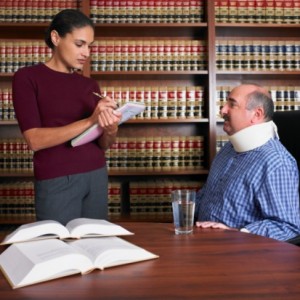Injury law is concerned to ensure that people who are injured or become ill due to the negligence of someone else or illegal behavior receive compensation. Although it is sometimes possible to resolve these disputes out of court to negotiate a compensation agreement, in many cases it will be necessary to take legal action and issue a request of the Court and the question then arises as to how this lawsuit will be paid for.
Most people have heard “legal aid”. This is the system set up and funded by the government that allows people who are unable to afford a lawyer with their own ways to get legal advice and representation that is paid by the state. Historically, legal aid has been granted to persons who have been injured in accident and wanted to make a claim for personal injury.
It is no longer possible to obtain legal aid to make a personal injury claim, and instead, the government has relaxed the law on how lawyers charge their clients by encouraging the dissemination of the “inextricable, toll-free” arrangements.
According to these provisions a lawyer agrees to take a case on the grounds that they will only charge if they succeed to the Court, or if they are able to successfully negotiate an out of court settlement. Usually, if the case is won in the Court and then the other side will have to pay the costs of your lawyer so in most cases, you will be able to retain 100% of his remuneration.
If the lawyer fails to succeed to the Court that his client not charges anything, however there is always a risk that if you lose your case, you will have to pay the costs on the other side and that is something that was not a problem in the days of legal aid. Usually the lawyer will be able to arrange an insurance policy that will meet the legal costs of the other side if the deal fails, and therefore the only loss suffered by you is the payment of a premium unique for this insurance.
The inextricable system, free of charge, which replaced legal aid in case of bodily injury to a number of positive points. Firstly, it has increased access to legal representation in these cases because the middle class people who were too rich to qualify for legal aid but too poor to pay a lawyer are able to take advantage of this expenses arrangement.
Second, the process of application for legal aid was complex and bureaucratic and the rate of pay was low, leading to many lawyers, give preferential treatment to a customer who had to pay their own expenses. Third, lawyers were often reluctant to take the case of personal injury legal aid because pay rates were low and because the application for legal aid was a complex and bureaucratic process that often these types of claims not profitable. Finally, because the lawyer will have a deal on a toll basis untenable if he has a reasonable prospect of success, less court time is wasted with claims which are frivolous and unfounded.
